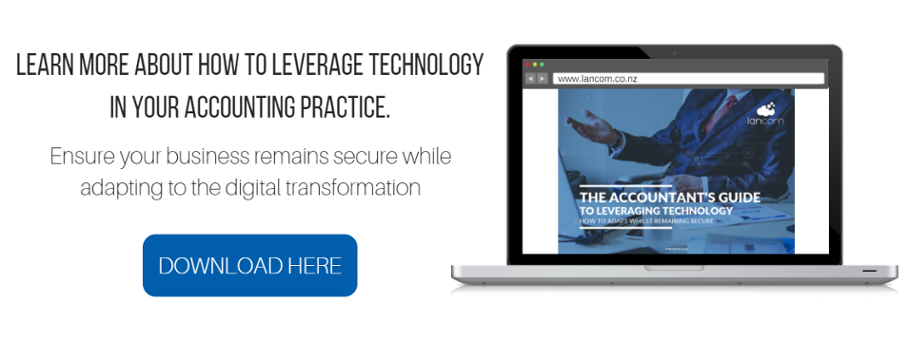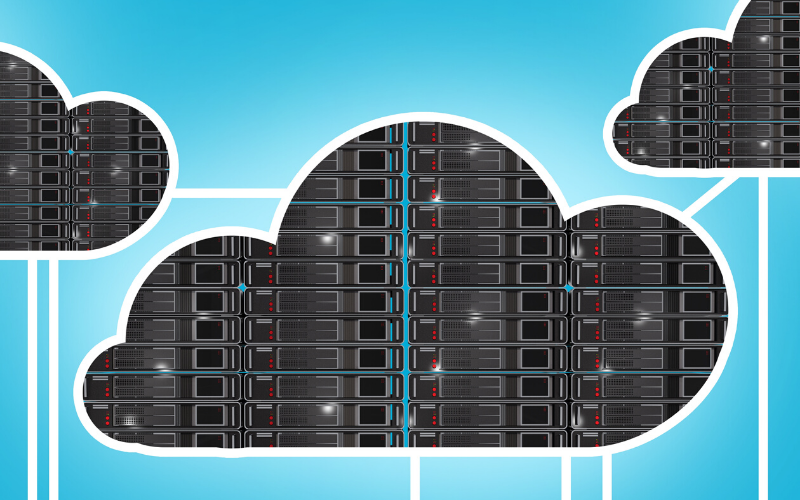The profitability and sustainability of every accounting firm today is directly linked to the cloud. That’s because moving to the cloud means a new way of working which is more efficient, more accessible, more mobile and more in tune with how people like to access and use their information. It’s a digital transformation and if you’re not already on the path to a cloud business, the time is now.
While ‘everyone else is doing it, so should we’ isn’t logically a good reason for going cloud, what is are the simple facts of how much better it is than having on-premise systems. Those reasons range from the financial (it is cheaper up front) to the technical (you get the latest version always, with zero upgrade impact). And they extend to the fact that your clients today are increasingly expecting cloud-delivered services from their accountant.
This is accounting in the cloud
Practically everyone who has a smartphone, or a computer, constantly uses cloud services. Dropbox, Google, Microsoft Office 365, YouTube: these are all cloud services. In its simplest form, a cloud service allows you to access (and store) data remotely, providing the flexibility to use multiple devices to access it.
It’s the same for online accounts. All the data is stored remotely on secure servers. To you and your employees, it works just the same (although depending on an internet connection), but there is no longer any chance of the data being lost or stolen.
Being in a central, remote location, the data can be accessed from any device: a PC, your smartphone or iPad. That’s what makes for the flexibility of a cloud accounting solution: work can be done from anywhere, at any time. Instead of ‘in the office’.
The efficiency boost
It should already be apparent how a cloud accounting boosts efficiency. When you’re able to perform minor, or even major tasks using nothing more than your phone, it means taking care of business is so much easier. Extend that benefit to all staff members, and it means they can achieve far more in less time.
This means they can also work towards focusing on where the real value is added in modern accounting practices: Advisory. Smart software in the cloud, with the introduction of new advanced techniques like artificial intelligence and machine learning, mean the ‘number crunching’ and administrative aspects of accounting are going away.
Equip your people with these tools – incorporated into cloud accounting software – and they can become advisors, consultants and concentrate on new business development.
And if your company provides ‘fixed fee’ accounting services, the cloud will deliver a major boost. Owing to the smart stuff built into your software, you can get it done faster. That means more customers, same number of staff members. And remember, with the cloud, any ‘smart stuff’ which improves productivity is immediately delivered to you – because cloud software automatically updates with the latest features available.
Getting into the cloud
Going from on-premise to cloud accounting software isn’t just a matter of changing the software (although that is a rather big part of it). It also means changing the way you work.
But if we’ve given the impression that moving into the cloud is good news, here’s an even better fact. Doing so tends to be easy.
The best place to start is to just go ahead and start. Get hands on. Most cloud service providers allow you to do just that at no cost. That’s how confident the providers of cloud software are: they know once you’ve had a go, and once you see the benefits, there’s no going back.
Try it for yourself with Microsoft Dynamics 365 for Financials. By using data which you’re running ‘in parallel’ with your existing financial system, you have the perfect opportunity to see how cloud software will change how you work. Chances are excellent that you’re not going to look back.
Need a more basic start? Office 365 is the go-to for the majority of New Zealand businesses, including your clients! The suite of products allows your business to run emails in the cloud, share files while working offline, while ensuring you are doing this in a secure way. If you haven’t yet started your transition to Office 365, starting small and adopting a hybrid approach is a proved and tested methodology which works.
Taking cloud to the next level: Rolling it out to your clients
Once satisfied that cloud accounting software does what it says on the tin, it’s time to start rolling it out to your clients. It makes sense to start with those who are more tech-savvy and less ‘set in their ways’; you’ll know which ones are more likely to be ready.
Treat the exercise as a ‘migration’, rather than a sudden change. As you work your way through the client list, you’ll pick up more experience and knowledge, from the simpler businesses, working progressively to those which are more complex and have higher technical requirements. As you bring more clients on board, your confidence will increase.
Moving to the cloud is your organisation’s digital transformation. It puts the power of the most modern, technologically advanced software in the world today in your hands, right now. It also puts that power in the hands of your clients – if they aren’t already expecting it from you, they soon will be.






